© 2025 MJH Life Sciences™ , Patient Care Online – Primary Care News and Clinical Resources. All rights reserved.
Consider Coronary Artery Calcium: 7 Questions
How current are you on CAC and its place in CVD risk assessment? This short quiz will reveal your score.
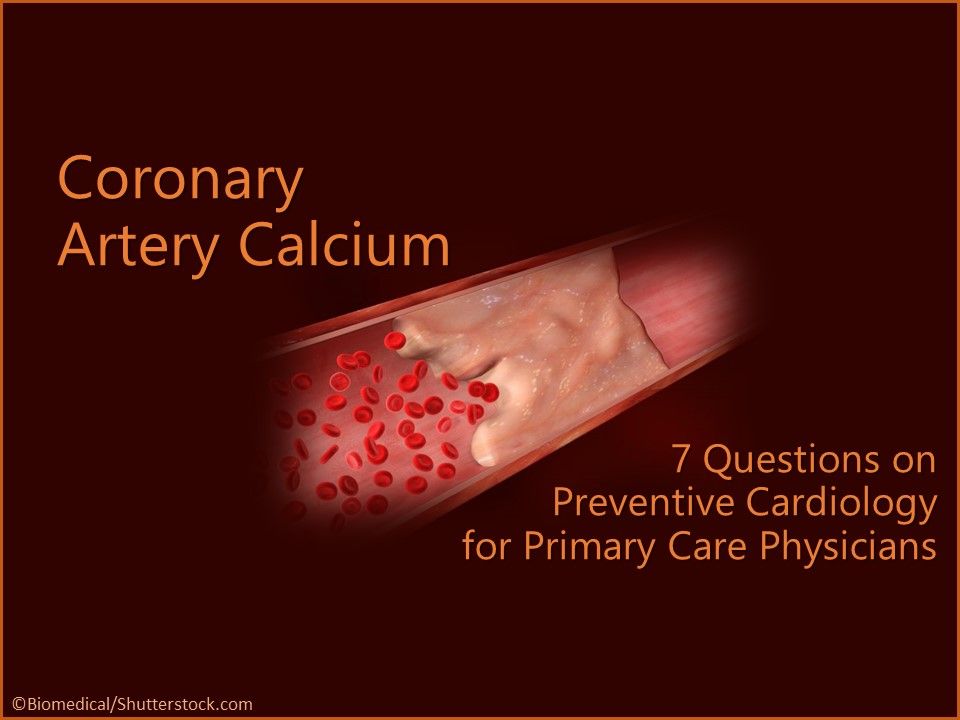
A recent Expert Analysis feature on the website of the American College of Cardiology highlights the value of coronary artery calcium (CAC) scoring in assessment and management of cardiovascular risk. Because CAC directly assesses the burden of atherosclerosis, it has the potential to help clinicians make more informed decisions about preventive treatments, in conjunction with traditional risk assessment tools like the Pooled Cohort Equations and Framingham Risk Score.
The Expert Analysis authors provide a concise review of current evidence for use of CAC scoring and of the test's acceptance by various international guideline committees. How current are you on CAC and its place in CVD risk assessment? This short quiz will reveal your score.
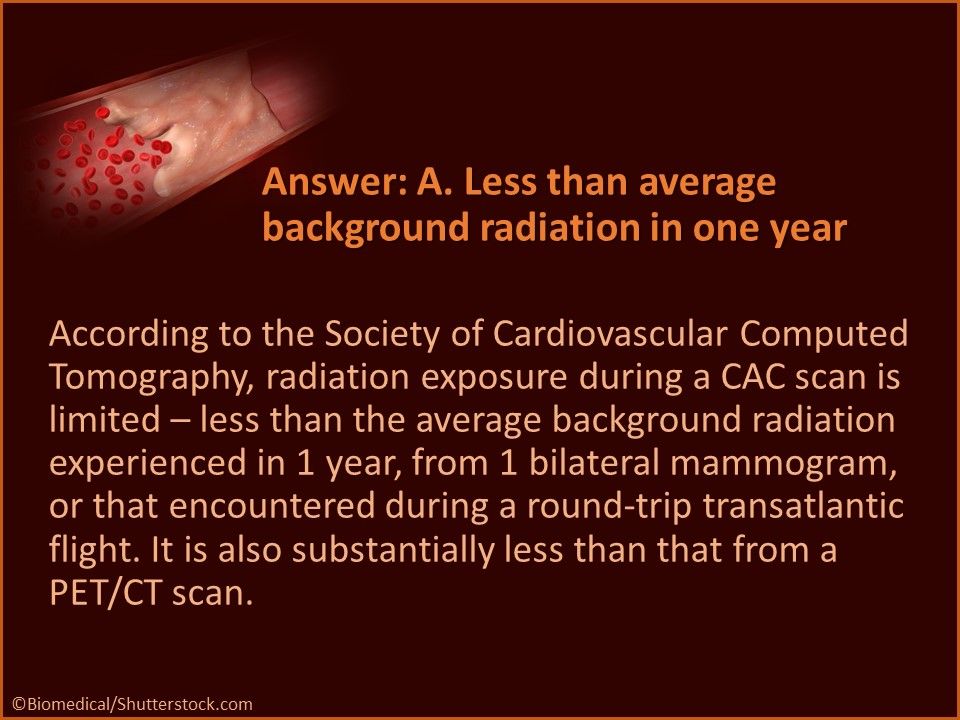
Answer: A. Less than average background radiation in one year. According to the Society of Cardiovascular Computed Tomography, radiation exposure during a CAC scan is limited – less than exposure the average background radiation experienced in 1 year, from 1 bilateral mammogram, or the epxosure encountered during a round-trip transatlantic flight. It is also substantially less than that from a PET/CT scan.

Answer: C. Amount of calcium in the walls of the coronary arteries. The Agatston score is provided as an absolute number or as a percentile for age, sex and race/ethnicity.
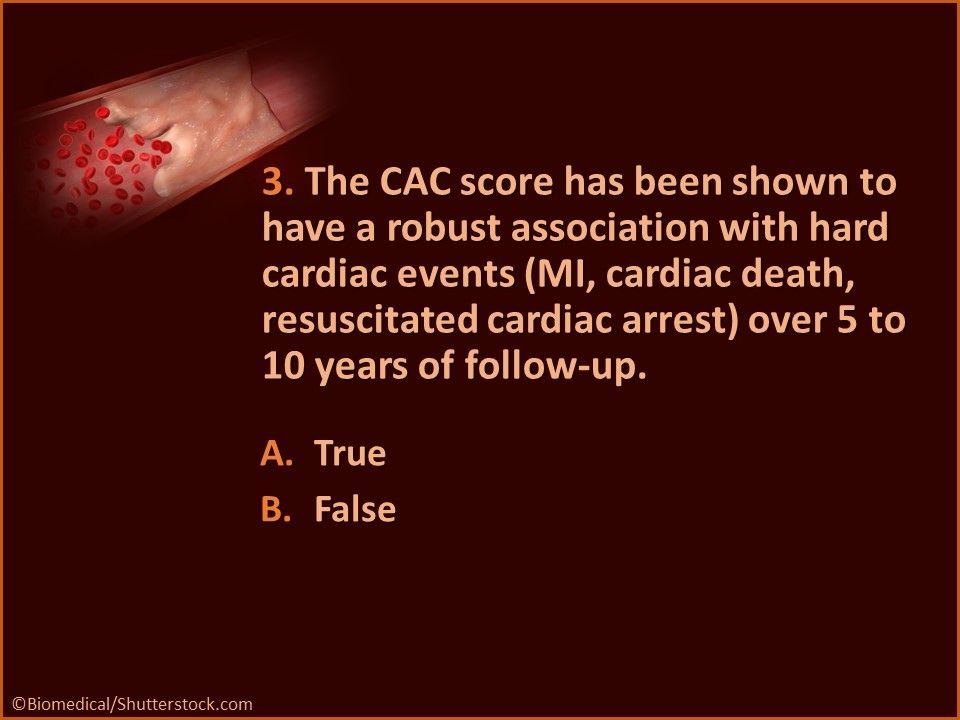
Question 3. True or False: The CAC score has been shown to have a robust association with hard cardiac events (MI, cardiac death, resuscitated cardiac arrest) over 5 to 10 years of follow-up.
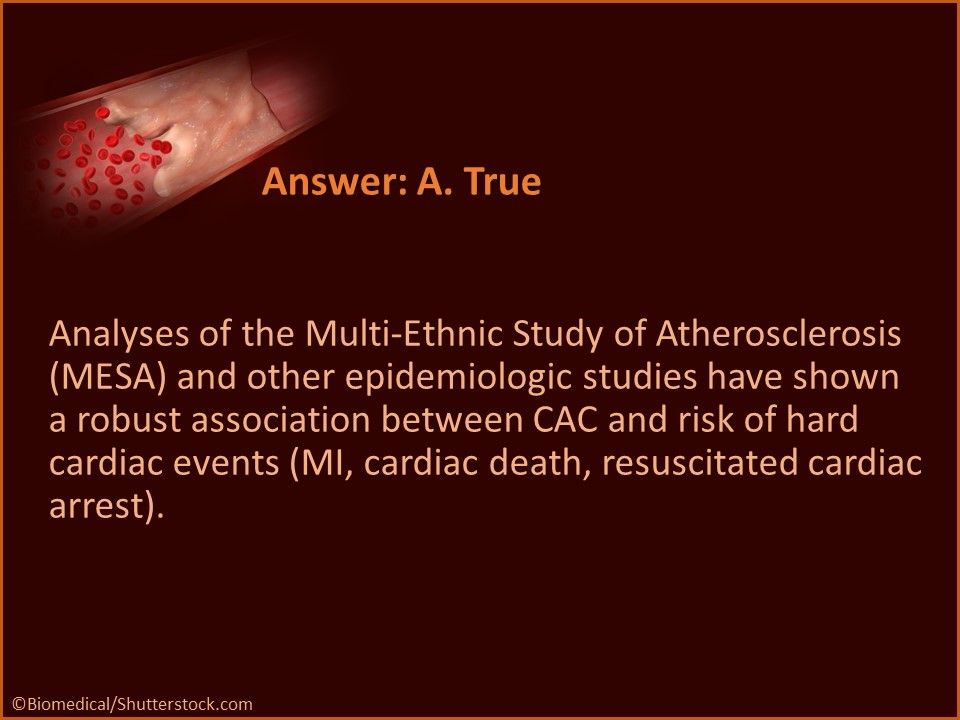
Answer: A. True. Analyses of the Multi-Ethnic Study of Atherosclerosis (MESA) and other epidemiologic studies have shown a robust association between CAC and risk of hard cardiac events (MI, cardiac death, resuscitated cardiac arrest).
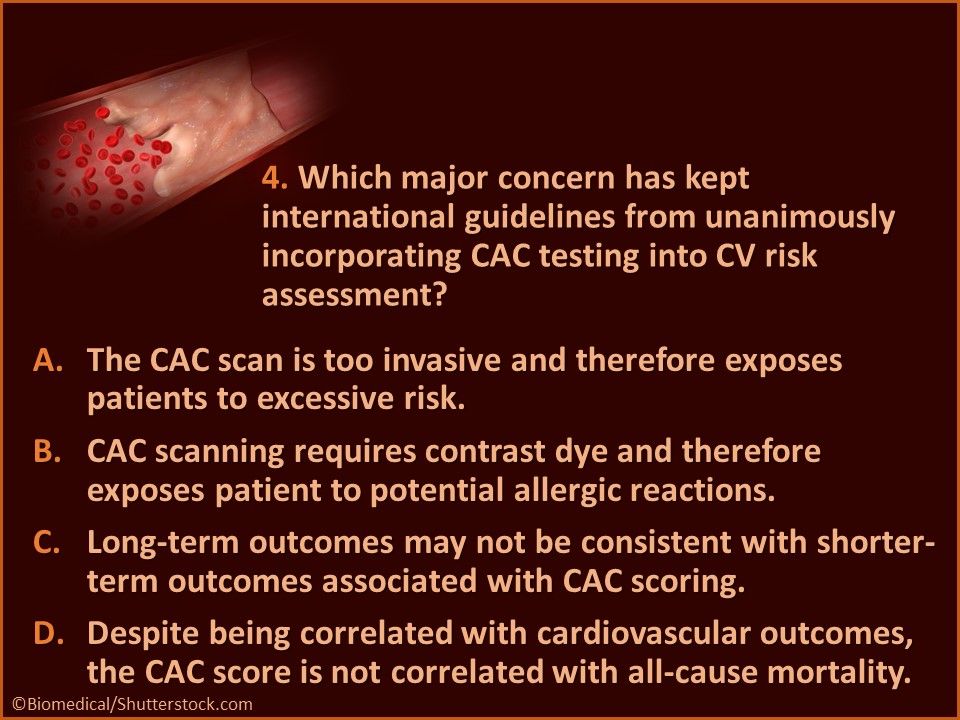
Question 4. Which major concern has kept international guidelines from unanimously incorporating CAC testing into CV risk assessment?
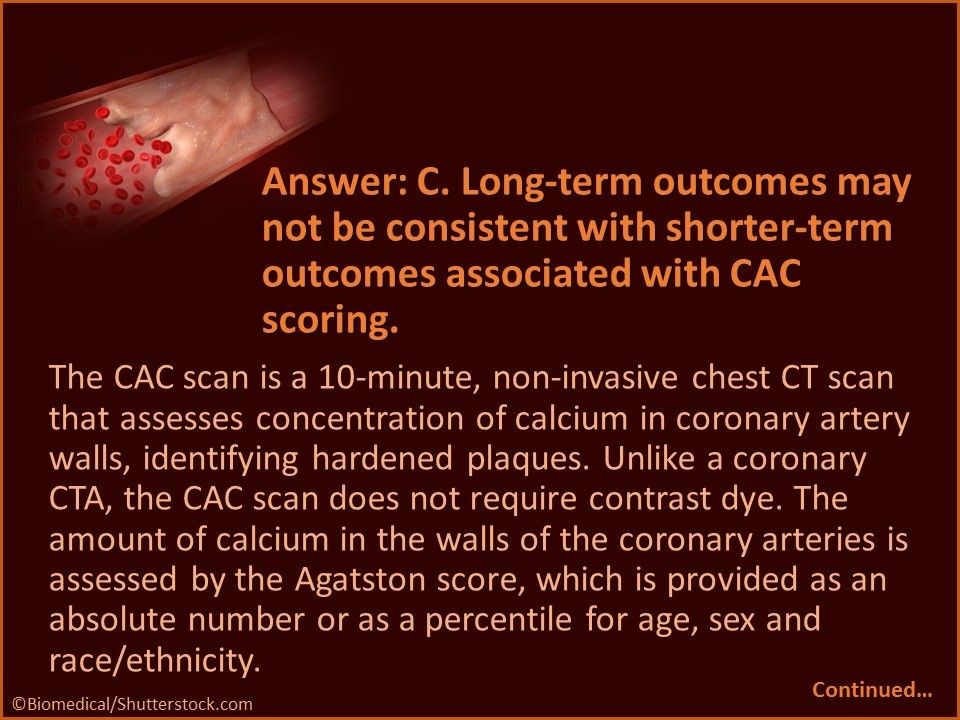
Answer: C. Long-term outcomes may not be consistent with shorter-term outcomes associated with CAC scoring. The CAC scan is a 10-minute, non-invasive chest CT scan that assesses concentration of calcium in coronary artery walls, identifying hardened plaques. Unlike a coronary CTA, the CAC scan does not require contrast dye. The amount of calcium in the walls of the coronary arteries is assessed by the Agatston score, which is provided as an absolute number or as a percentile for age, sex and race/ethnicity.
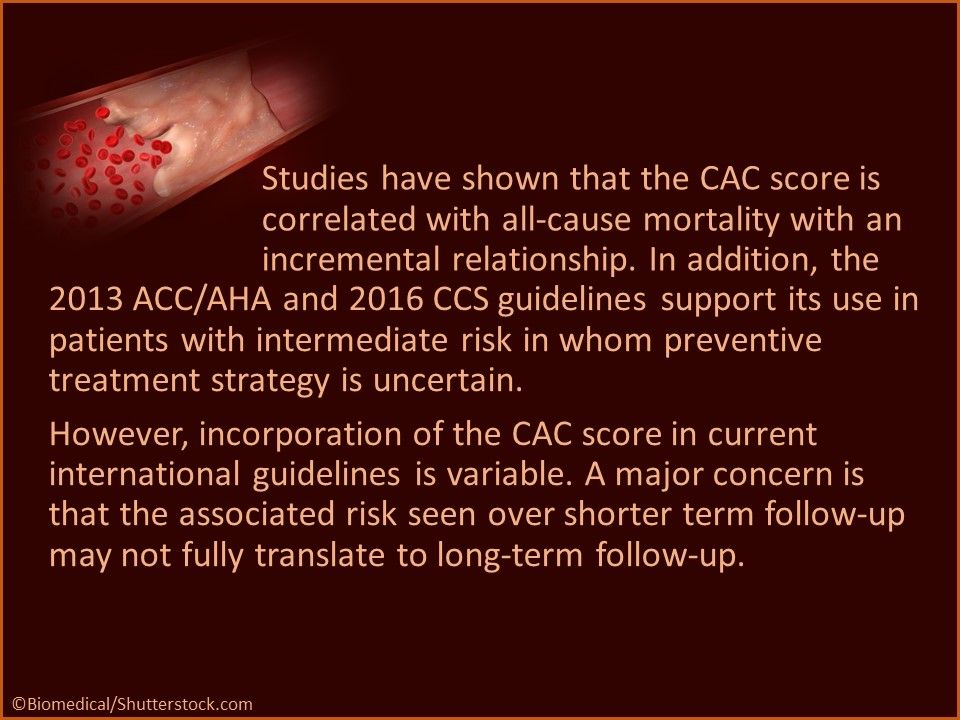
Studies have shown that the CAC score is correlated with all-cause mortality with an incremental relationship. In addition, the 2013 ACC/AHA and 2016 Canadian Cardiovascular Society guidelines support its use in patients with intermediate risk in whom preventive treatment strategy is uncertain.
However, incorporation of the CAC score in current international guidelines is variable. A major concern is that the associated risk seen over shorter term follow-up may not fully translate to long-term follow-up.

Question 5. When does the 2013 ACC/AHA guideline* recommend using a CAC score for primary prevention?

Answer: A. When a risk-based treatment decision is uncertain. The ACC/AHA has a Class IIB recommendation when “a risk-based treatment decision is uncertain.” After quantitative risk scoring using traditional risk factors, CAC can be used to refine the risk estimate and lead to more informed shared decision making between patient and clinician on preventive therapy.
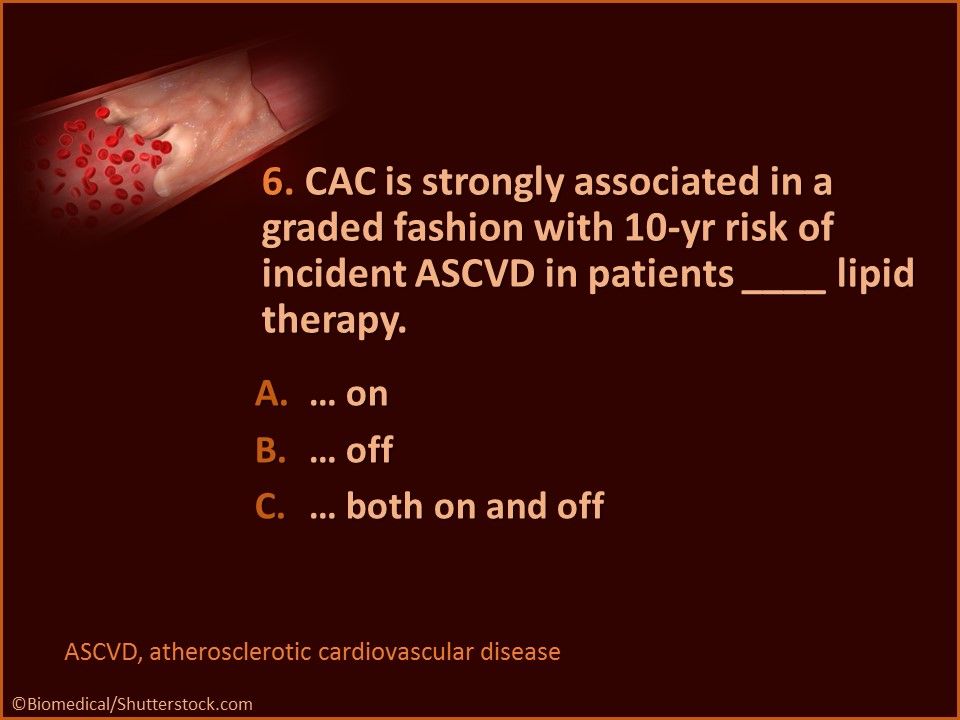
Question 6. CAC is strongly associated in a graded fashion with 10-yr risk of incident ASCVD in patients ____ lipid therapy.
Source: Pallazola V, Hla D, Martin SS, Blumenthal RS. Coronary artery calcium and atherosclerotic cardiovascular disease: bridging the gap to optimize primary prevention of cardiovascular disease [Expert analysis]. American College of Cardiology website. https://www.acc.org/latest-in-cardiology/articles/2018/07/16/13/29/coronary-artery-calcium-and-atherosclerotic-cvd . Published July 16, 2018. Accessed August 23, 2018.








